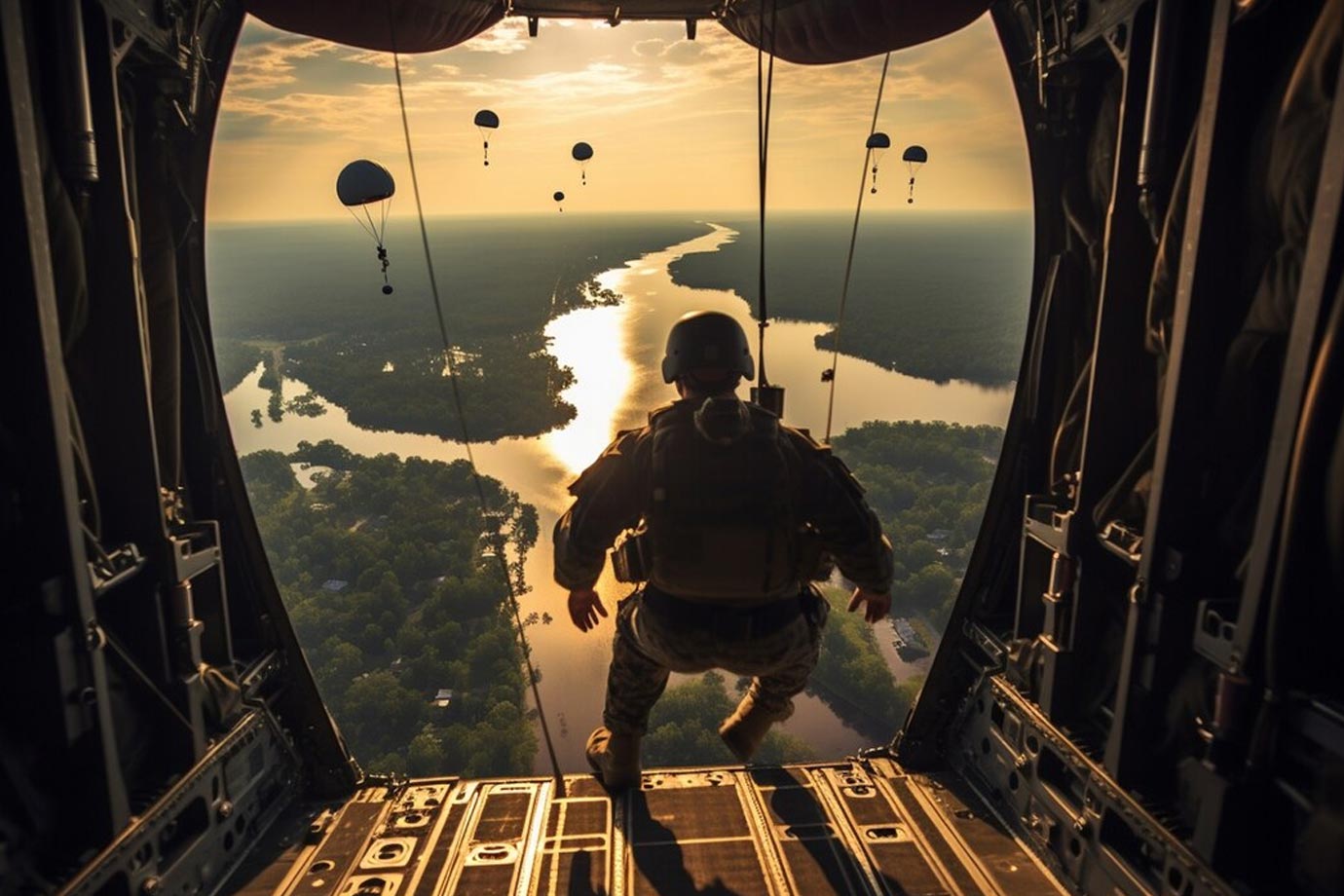C17 Aircraft for Aviation Fans
The C-17 Globemaster III has played an essential role in modern military airlift operations. Designed and built by McDonnell Douglas, now a part of Boeing, this aircraft serves with distinction in numerous global air forces. It has the capability to transport troops, heavy cargo, and even perform strategic airlift missions.
Design and Features
Standing out with its high-wing design, the C-17 boasts a unique blend of versatility and reliability. Its four Pratt & Whitney F117-PW-100 turbofan engines provide substantial thrust. This makes it possible to carry up to 170,900 pounds of cargo. The aircraft’s maximum takeoff weight reaches an impressive 585,000 pounds.
The landing gear system of the C-17 is particularly interesting. It comes equipped with a tricycle-type landing gear system featuring 12 main landing gear wheels and two nose landing gear wheels. This setup allows the aircraft to land on runways as short as 3,500 feet and as narrow as 90 feet.
Performance Capabilities
The C-17’s performance in tactical situations is noteworthy. Its ability to take off and land on austere airfields with limited infrastructure enables it to operate in diverse environments. This is crucial for missions requiring immediate response and flexibility.
Its in-flight refueling capability further extends operational range. The aircraft can remain airborne for longer durations without needing frequent landings. This is particularly beneficial for long-distance troop deployments or humanitarian missions.
Operational History
The first C-17 took to the skies in 1991. Since then, it has been involved in a wide range of missions. From delivering humanitarian aid in disaster-stricken regions to deploying troops in combat zones, the Globemaster III lives up to its name.
One significant deployment occurred during Operation Enduring Freedom. The C-17s played a crucial role in airlifting supplies and personnel to various locations in the Middle East. Their reliability and capacity to carry large loads made them indispensable during the operation.
Technological Advancements
The C-17 incorporates advanced technology to enhance its operational efficiency. One such feature is the Heads-Up Display (HUD) for the pilot. This system provides critical flight information without requiring the pilot to look away from their usual viewpoint. This enhances situational awareness and safety during missions.
Another important technological feature is the integrated Global Positioning System (GPS). This ensures precise navigation, even in challenging and less-mapped regions. The C-17 is equipped with a fully digital fly-by-wire control system, improving responsiveness and reducing pilot workload.
Maintenance and Longevity
Regular maintenance and updates ensure the C-17 remains mission-ready. Boeing provides extensive support for repair and overhaul, ensuring that even aging aircraft continue to perform at peak efficiency.
The modular design of the C-17 allows for easier parts replacement and upgrades. This means that new technology can be integrated without completely overhauling existing systems. Additionally, its rugged design minimizes downtime and operational disruptions.
C-17 Variants
Though the C-17 design has remained largely consistent, there are some notable variants. These variants cater to specific mission requirements or national preferences. The Indian Air Force operates a slightly modified version, adapted to suit its unique operational needs.
A Closer Look for Aviation Enthusiasts
Aviation fans often appreciate the C-17’s blend of strength and agility. Its ability to perform tactical maneuvers, despite its size, is a subject of intrigue. The aircraft’s stalling speed is relatively low for its weight class, allowing it to operate in and out of shorter airfields compared to other cargo planes.
Another interesting aspect is the aircraft’s defensive systems. Equipped with advanced countermeasures, the C-17 can evade radar detection and missile threats. This combination of payload capacity, performance, and protection makes it a preferred choice in high-risk environments.
Training and Crew
Crew training is an essential aspect of C-17 operations. Pilots undergo rigorous training programs that include simulator sessions and live flights. The goal is to ensure they can handle complex scenarios, such as in-flight refueling and operating in combat zones.
The crew typically consists of two pilots and one loadmaster. The loadmaster plays a crucial role in managing cargo and ensuring it is properly secured. They also aid in airdrop operations, which require precise coordination and timing.
Global Impact
The C-17’s impact is felt worldwide, both in military and humanitarian contexts. It has supported numerous UN missions, delivering critical supplies to regions affected by conflict or natural disasters. Its reliability in varied weather conditions makes it a dependable asset in global airlift operations.
Future Prospects
As technology evolves, so does the C-17. Continuous improvements and upgrades ensure it remains relevant in modern operations. With enhanced avionics and structural updates, the aircraft is set to serve well into the coming decades. Its legacy as a versatile and dependable airlift platform is cemented in aviation history.
“`
